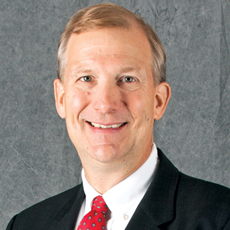
When the Secretary of the Department of Health and Human Services addressed a gathering of nursing home owners and operators Tuesday in Washington, it might not have been the HHS Secretary everyone had once hoped for. But at least he delivered his message straight and didn’t drop any big surprises on anyone.
Alex Azar, who recently took over for the blemished Tom Price, gave the administrations’s expected talking points, which in the long run is probably good news for the long-term care profession. Stability is one thing never in deep enough supply, and by sticking to an unsurprising line of commentary, Azar at least didn’t unexpectedly upset the apple cart.
He told the providers they would be a key cog in restructuring a healthcare system that is not ready for the second wave of baby boomers. To that end, he emphasized that the White House would continue to try to cut providers’ administrative “burdens.”
He also noted continued pressure for “lowest-cost appropriate” settings of care, which is where LTC operators get it coming and going. Cheaper than a hospital by a long shot, they still cost state and federal governments a lot more than home- and other non-institutional care models.
Providers must invest more in interoperability efforts and test new payment models, Azar emphasized. And they must continue to seek customized, self-opted care plans for the disabled, he added, noting how a “shift” in expectations about how people with disabilities should be treated is underway.
The new Patient Driven Payment Model is a curious animal so far for providers. They’ve poked and prodded it through the bars just enough to raise both hope and suspicion. Azar offered that it should at least cut paperwork by about $200 million per year for the next decade, a notion providers have challenged. He added that Uncle Sam should not be paying for “overuse of services,” a veiled shot at providers who might try to game or otherwise soak the system — as well as a shot at the system itself.
Azar, of course, is the replacement for the discredited Tom Price, the surgeon and fellow healthcare provider who rose to become U.S. lawmaker and then head of HHS. He came under heavy fire for certain healthcare investments and injudicious use of jet planes at taxpayers’ expense, however, early in his run as top U.S. healthcare official. He resigned in September, probably just moments before President Trump would have rightfully pushed him overboard.
Having Price at the podium on Tuesday would have been much more to providers’ liking, but that ship sailed long ago.
Now, it’s their goal to keep a prominent profile in front of the Secretary Azar and his underlings. Tuesday didn’t hurt that effort, which is a good thing because AHCA has identified a handful of PDPM topics that its leaders believe need tweaking or outright overhaul.
Some providers have worried aloud about dividing beneficiaries into five categories, and how payment would be divvied up. Customized care might be on the block, they say, even though transparent, individualized care is just what federal wonks have called for.
In comments submitted to Centers for Medicare & Medicaid Services Administrator Seema Verma a couple of weeks ago, AHCA politely said fixing is needed in these biggest problem areas: 1) System complexity and compliance concerns, 2) new costs and administrative burdens, 3) PDPM system stability, 4) developing a workable transition plan from the current RUGS IV system to PDPM and 5) beneficiary access challenges to certain specialty populations.
The association fully detailed concerns, which is just what Azar said Tuesday was welcomed. At some point, however, the time for discussion and talk will be over. That will be the moment of truth.
As Azar reminded Tuesday, maintaining the status quo is not an option.
Follow Editor James M. Berklan @JimBerklan.



